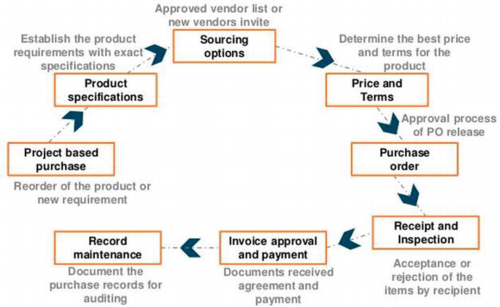Supply Management
Supply Management is defined as “The process of obtaining and managing of materials, components or services needed to operate a business or other type of firm. The elements of supply management contain the actual materials/components, budgets, information, and employees. The key purpose of this procedure is to keep costs stable and use resources effectively to increase the efficiency of the business and profits”
Most people consider supply chain management as the way corporations buy raw materials and finished goods. But supply management is more than simply buying products and contracting for services. It is a systematic business process that goes further than procurement to include the coordination of pre-production logistics and inventory management, along with budgeting, employees, and other key information to keep the business running smoothly.
The main goals within supply management are cost control, the efficient allocation of resources, risk management, and the effective gathering of information to be used in strategic business decisions.
Oversight and management of suppliers and their contributions to a company's operations, for example, should be of paramount importance. Supply management personnel within a company or institution are generally responsible for the following:
- Identifying, sourcing, negotiating, and procuring a service or good that is essential to a company's ongoing operations according to the wishes of the organization's leaders and supervisors
- Formulating a strategy for developing and maintaining relationships with suppliers — and then executing on it—as well as holding suppliers accountable
- Utilizing technology and procedures that facilitate the procurement process
- Considering the theories of supply and demand and what influence they have on supply management[1]
Supply management is a five-phase process:[2]
- It starts with the identification of the materials or components required to fulfill the requirement of the enterprise. During this phase, the need is to convert into a statement describing the materials or components required to fulfill the need. It is projected that around 85% of the cost of material is determined during this phase. In sophisticated and multinational firms, supply management professionals and pre-qualified vendors are involved in this phase.
- The second phase of supply management contains identifying the supplier who will best fulfill the need.
- The third phase comprises the process of establishing a reasonable and fair price for the material to be purchased.
- The fourth phase results in an enforceable contract for the purchase that fulfills the requirement of both firms (supplier and buyer).
- The last phase needs managing the relationship to guarantee quality and delivery time of the material. During this last stage, the supply management firm may work with the supplier in an effort to enhance the efficiency of the supplier with the objective of reducing cost and/or improving quality

source: Syed Abdul Rehman Khan and Zhang Yu
Supply Management Vs. Supply Chain Management[3]
The difference between supply management (procurement) and supply chain management is simply that procurement represents only a portion of supply chain management processes, which have a more expansive view over a wide range of internal mechanisms. However, without procurement, there would be no such thing as supply chain management. As organizations adopted stronger materials management practices, procurement began to become increasingly important. Supply began to work closely with other materials departments to understand the impact of inventory carrying costs on supply decisions. In doing this, supply personnel gained a better understanding of transportation and the substantial savings generated through joint efforts. Relationships improved significantly and departments under the materials manager worked more closely as united teams rather than disparate groups.
Supply chain management evolved from this collaborative approach and combined supply management with additional departments. Supply chain management also expanded beyond the organization to include layers of suppliers and logistics providers, as well as multiple customer tiers. Unlike procurement and supply management, which focus primarily on specific processes, Supply chain management (SCM) considers the flows of materials and services, information, finance, and relationships across all boundaries. SCM offers the supply professional improved total cost of ownership numbers, suppliers and supplier management, new ways of managing inventory, and earlier risk warning signals. The supply professional has several opportunities within SCM for leadership and significant contribution to revenue and profit growth in their organizations. SCM moves from managing functions to managing a series of supply chain networks that include the physical, informational, financial, and relational flows within a particular network from cradle-to-grave or cradle-to-cradle. A supply chain manager is typically involved with:
- The selection, evaluation, management, and development of the existing supply base
- A thorough understanding of the entire supply base, capacity, and potential suppliers
- The ability and skill to manage global suppliers anywhere in the world as needed
- Selection and management of tiers of suppliers, not just tier one, but tier two, three, and so on
- An understanding of global economic impacts that guides the organization in making informed location decisions
- The ability to advise the organization on offshoring, nearshoring, best shoring, onshoring, and insourcing decisions to capture the best place at any time to manufacture
- Participation in risk management planning, portfolio management, and rapid recovery of the organization due to supply and supply chain disruptions
See Also
Supply
Supply Chain
Supply Chain Architecture Life Cycle (SCALe)
Supply Chain Design
Supply Chain Management (SCM)
Supply Chain Visibility (SCV)
Supplier
Supplier Evaluation
Supplier Relationship Management
Supplier Scorecard
Supplier Selection
Supplier Value
Procurement
References
- ↑ Understanding Supply Management Investopedia
- ↑ What are the five phases of the Supply Management Process intechopen.com
- ↑ What's the Difference Between Procurement and Supply Chain Management? ThomasNet
